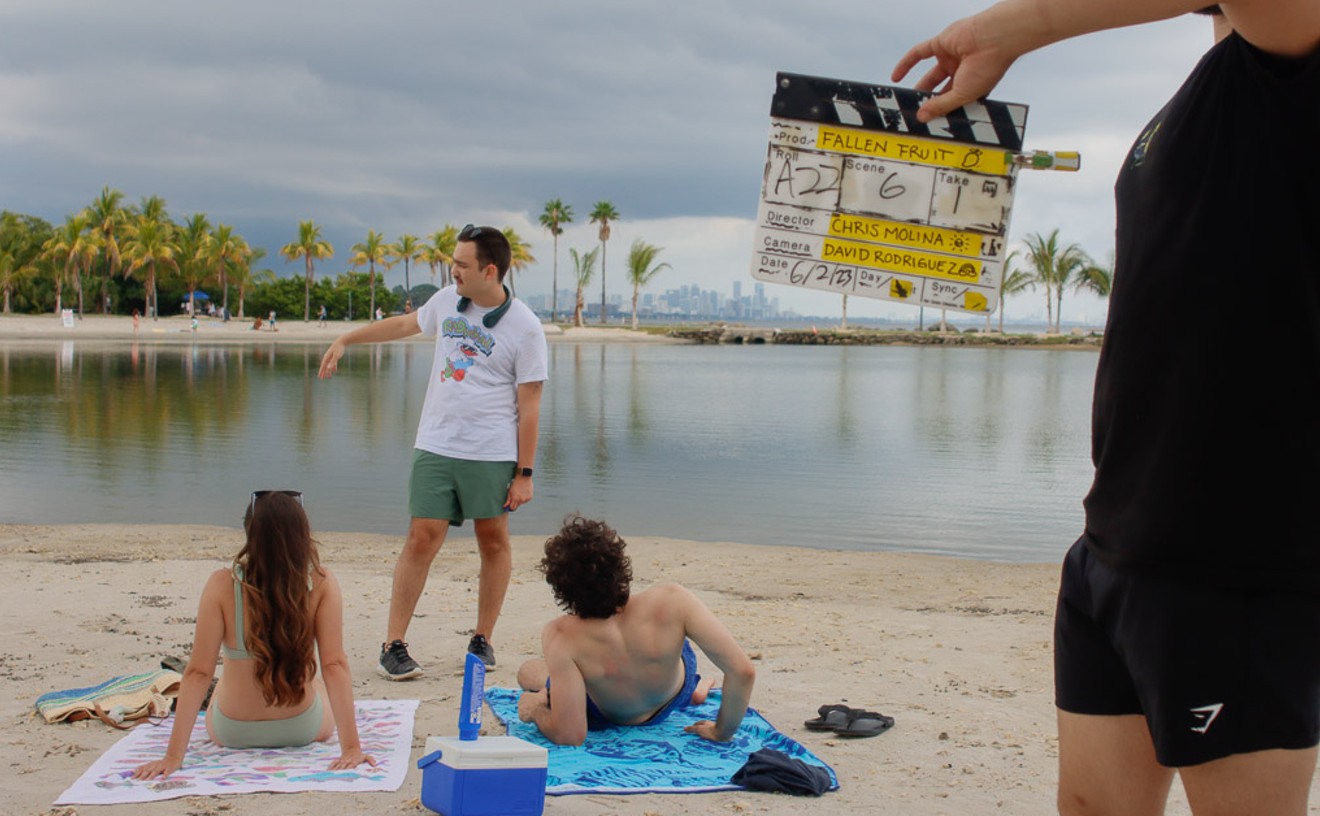Manny Prieres isn't a big literary guy. The 40-year-old graphic designer and artist was born in Spain after his parents relocated there from Cuba. As a teenager, he attended Southwest Miami High School, where he often painted album covers on jean jackets for friends and developed his drawing skills.
But more recently, he's taken to drawing literary works — from the Bible to The Satanic Verses — that have been banned, burned, or considered controversial. His work captures the spirit of the age that spawned these outlawed classics.
Now Prieres' striking drawings of these taboo tomes are on view at the Bass Museum of Art as part of "Time." The new show presents international and local talent exploring interpretations of time through projects that feature everything from painting, photography, video, sculpture, and objects of design to performance.
"The 29 drawings are lined up in chronological order," Prieres describes. "In that timeline, you will see The Adventures of Huckleberry Finn, 1984, Howl, The Satanic Verses, etc., and automatically see a timeline of change and revolution. You can see the challenges we faced at that particular moment and how ideas that once were considered dangerous become cultural sublimation."
Isolated in a first-floor gallery at the Bass, Prieres' solo project is called "It Was a Pleasure to Burn." The works, created in shades of black, are the size of the dust jackets or first-edition covers that inspired them. They explore notions of censorship, postwar counterculture, the history of printing, and the power of mass communication.
At first, they appear machine-made, but closer inspection betrays the artist's hand. He creates his drawings using graphite, gouache, and board, resulting in starkly elegant and layered surfaces. Prieres says the dying craftsmanship of bookmaking also influences his work. He creates each work in an edition of five, all precisely hand-drawn with an impeccable draftsman's eye.
"Some of these books deal with religious mysticism, the sexual revolution, the civil rights movement, war, and politics," he explains. "I have read about ten of the books. My favorite in the series are 1984, Fahrenheit 451, and Brave New World. These books each have to do with a dystopic society where fascists seek to control the populace. In them, you'll find parallels with how the NSA is spying on Americans today."
Prieres, who approaches the books he appropriates as if an anthropologist doing field work to study contemporary society, says his father, Manuel Sr., is an author who has penned several volumes about Cuban exile politics. "He was very involved in regional politics and was often invited to speak as an authority on El Exilio on Radio Mambí and write articles for the local press," the artist recollects.
Prieres says a childhood encounter with Abbie Hoffman's Steal This Book left a lasting impression. "When I was about 11, my cousin Peter saw Hoffman's book in a bookstore and stole it," Prieres laughs. "When he first showed it to me, the book was still controversial and a little scary. Hoffman wrote about scamming the government, planting marijuana, how to get food stamps, that sort of stuff. I now own a first edition of it."
The artist chose black as the primary color for his drawing because of the raft of cultural connotations. "It conjures many associations. First there is the whole blacklisted, blackballed reference... and then there's the good-guys-wear-white-hats and bad-guys-wear-black-hats thing, down to skin color."
Prieres points to volumes such as The Adventures of Huckleberry Finn and Howl, noting that both were once taboo but now are an integral part of the American literary canon. "When Allen Ginsberg wrote [Howl] at the beginning of the sexual revolution, those who were seen walking with a copy would be labeled perverts because of the poet's homosexuality," he says. "Today most of the nation is on the way to accepting same-sex marriage."
Prieres, who is one of a handful of local artists who moved to Los Angeles last year, says he rarely considers politics when choosing books to draw. Instead, he says, he bases his choices on how subcultures used them to convey a message.
"I'm really interested in reading Revolutionary Suicide next by Huey P. Newton, the cofounder of the Black Panther Party. Here you have a group of people organizing stuff back in the early 1970s that was completely stifled by the U.S. government. Now look at us today with a black president. Who would have thought it?"










